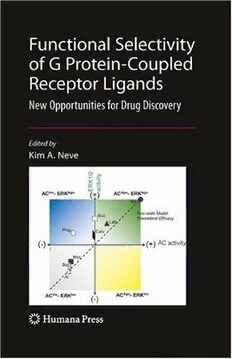
Functional Selectivity of G Protein-Coupled Receptor Ligands: New Opportunities for Drug Discovery PDF
287 Pages·2009·3.132 MB·English
Most books are stored in the elastic cloud where traffic is expensive. For this reason, we have a limit on daily download.
Preview Functional Selectivity of G Protein-Coupled Receptor Ligands: New Opportunities for Drug Discovery
Description:
Functional selectivity refers to the ability of different ligands acting at one receptor subtype to activate multiple signaling pathways in unique combinations; that is, one drug can be an agonist at pathway A and an antagonist or partial agonist at pathway B, and another drug can have the reverse profile. Functional selectivity has profound implications for drug development, for chemical biology, and for the design of experiments to characterize receptor function. In Functional Selectivity of G Protein-Coupled Receptors expert neuroscientists and pharmacologists review the work that demonstrated the existence of functional selectivity, placed it within a theoretical framework, and provided a mechanistic basis for the phenomenon. This exciting, comprehensive, and future-oriented volume includes chapters that focus on theoretical and mechanistic aspects of functional selectivity and that cut across subfamilies of GPCRs. Additional chapters focus on subfamilies of therapeutically relevant receptors where there is considerable evidence of ligand functional selectivity. Accessible and authoritative, Functional Selectivity of G Protein-Coupled Receptors is a valuable educational tool and reference source for students and scientists interested in drug development, chemical biology, and GPCR function.
See more
The list of books you might like
Most books are stored in the elastic cloud where traffic is expensive. For this reason, we have a limit on daily download.
